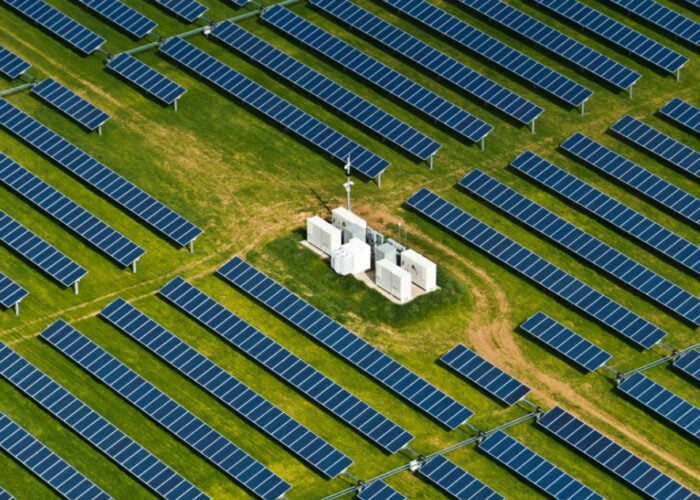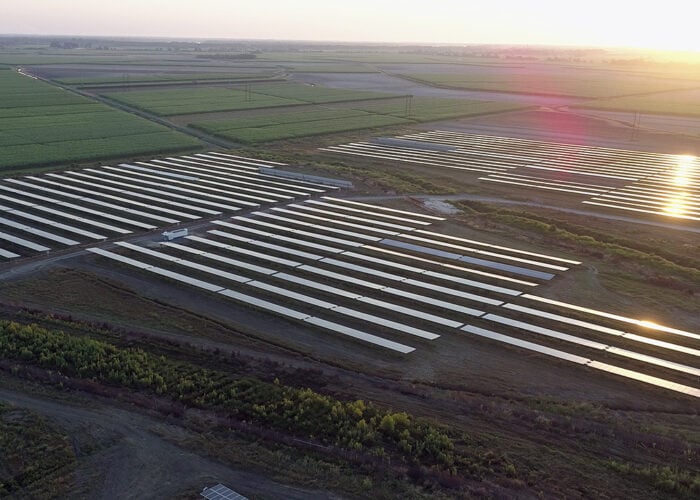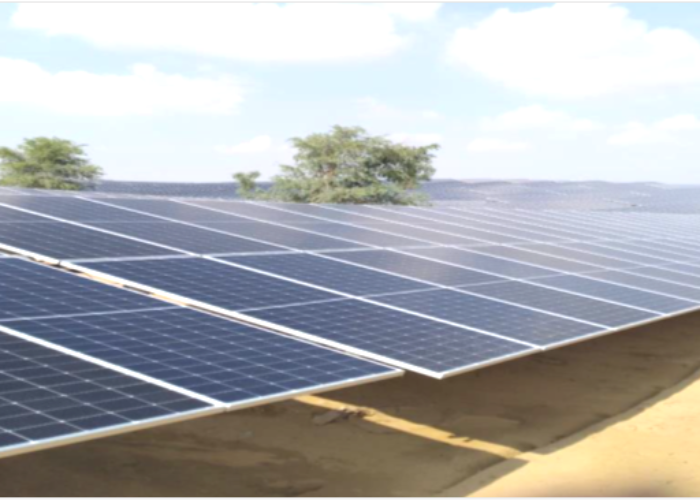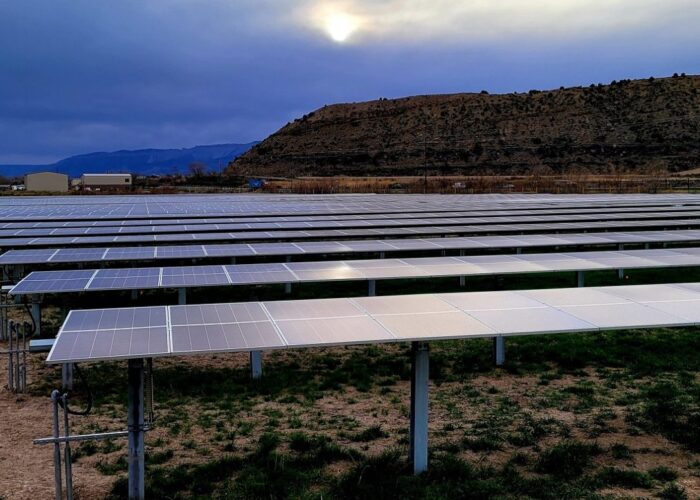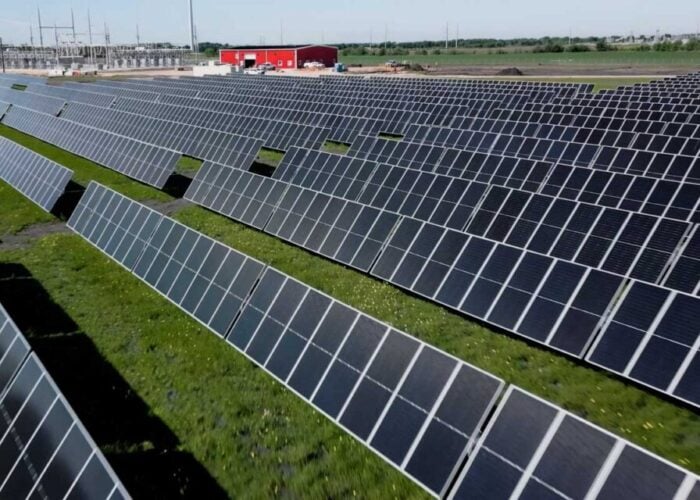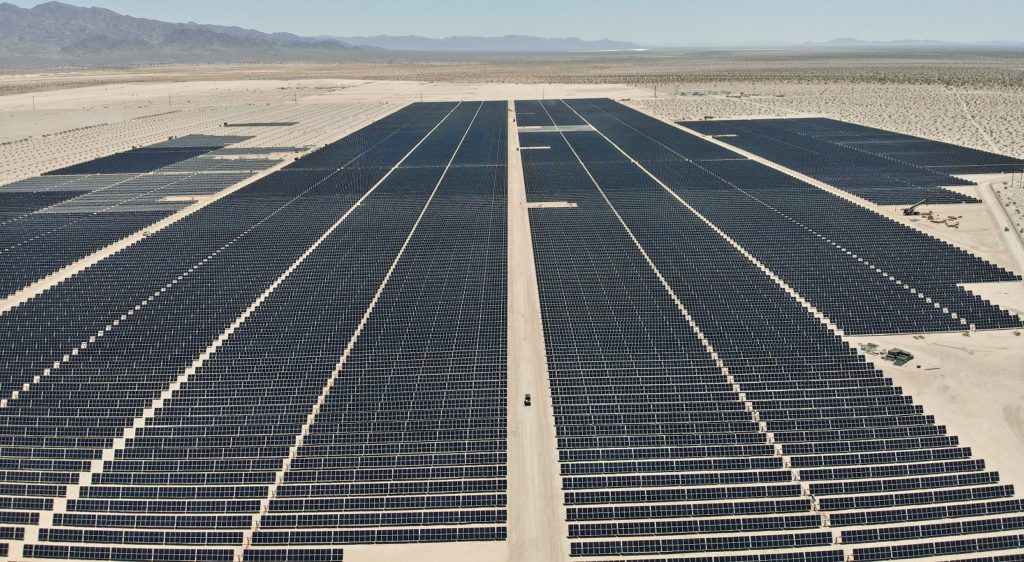
North America will spend a cumulative US$12 trillion on renewable energy generation and its transmission by 2050, according to Norwegian-headquartered consultancy firm DNV.
The Inflation Reduction Act (IRA) and Canada’s Federal Budget have forced a rethink of the US energy sector by investors and energy forecasters, DNV said in its Energy Transition North America 2023 report, and begun to lay the ground work for long-term capital expenditure (CAPEX) in renewables and grids. The report said that US$7 trillion would need to go towards clean energy generation and US$5 trillion to grids and operational expenditure.
Unlock unlimited access for 12 whole months of distinctive global analysis
Photovoltaics International is now included.
- Regular insight and analysis of the industry’s biggest developments
- In-depth interviews with the industry’s leading figures
- Unlimited digital access to the PV Tech Power journal catalogue
- Unlimited digital access to the Photovoltaics International journal catalogue
- Access to more than 1,000 technical papers
- Discounts on Solar Media’s portfolio of events, in-person and virtual
Or continue reading this article for free
For context, the IRA – touted as the ‘largest’ climate investment package in history – made US$369 billion available in tax credits for clean energy production and manufacturing for the next decade. That is just over 3% of US$12 trillion.
Solar PV
Of the US$7 trillion in generation expenditure, DNV said that US$2.3 trillion will go towards solar PV and US$1.6 trillion to wind power.
The report forecasts that by 2027 solar PV will have overtaken all other renewable sources in capacity, becoming the largest of any generation technology in the mid-2030s before accounting for almost half of North America’s power consumption by 2050. This is driven largely by the falling levelized cost of energy (LCOE) for solar, as well as the incentives for production and investment (PTC and ITC) included under the IRA that have solidified a decade of relative certainty ahead for investors.
By 2050, the report said that it expects LCOEs as low as US$20/MWh and US$36/MWh for solar PV and solar-plus-storage respectively.
As such, renewables CAPEX (led by solar) will overtake fossil fuel CAPEX by 2040, DNV said. Earlier this year the Solar Energy Industries Association (SEIA) published findings that the solar and storage industries have added US$100 billion to the US economy since the passing of the IRA. A significant portion of this is from manufacturing announcements, and whilst the US is pushing to bring its PV industry onshore there are questions over whether domestic products will be able to compete on price or abundance with imports.
European companies have been concerned over the impact of imported Chinese solar products on their market recently, too, as the continent has struggled to kick off its manufacturing revamp in the shadow of the IRA and an influx of cheaper imports.
The report said that by 2050 almost a third of all solar will be combined with storage, mostly batteries. In June, DNV published a survey saying that solar-plus-storage projects will take an increasingly large role in the energy transition in the coming years. As well as financial opportunities for deployment, storage offers stability to solar generation that is inherently intermittent, which in turn supports a more reliable grid.
Grids
Grids and transmission are a point of concern for the US’ energy transition – as highlighted by a report last week from Californian utility Edison International – and DNV said that the US interconnection system will need to more than double in capacity by 2050 at a 3% annual growth rate. The increase of solar penetration – as well as other renewables – necessitates more high-voltage, long-distance transmission lines as well as a more resilient and versatile low-voltage distribution grid.
Whilst grids in North America have not seen any significant overhaul in the last decade, DNV predicts that the influx of new renewables projects following the IRA will ultimately force grids to follow suit. But, the report identified a lack of expansion plans in the near-term – which created vast interconnection queues in 2022 – and which could undermine the stimulating effects of the IRA and Federal Budget. Simply put, a solar farm that cannot connect to the grid will not decarbonise anything.
The report continued: “More worryingly, [interconnection shortage] reduces the attraction of renewables as a commercial venture, due to cost increases associated with delays to starting revenue-generating operation. This drives away investors and project developers, with severe long-term consequences for the renewables market in North America.”
Looking to the Net Zero endgame in 2050, however, DNV ultimately concludes that these grid challenges are surmountable due to the sheer market opportunity presented by the renewable energy transition:
“The fact that we forecast a more-than-doubling of grid capacity in the next three decades is not a matter of faith that policymakers will introduce the legal framework required as much as it is an acknowledgement that the vast market for renewable power creates an historically unprecedented opportunity for transmission- and distribution-system operators.”

